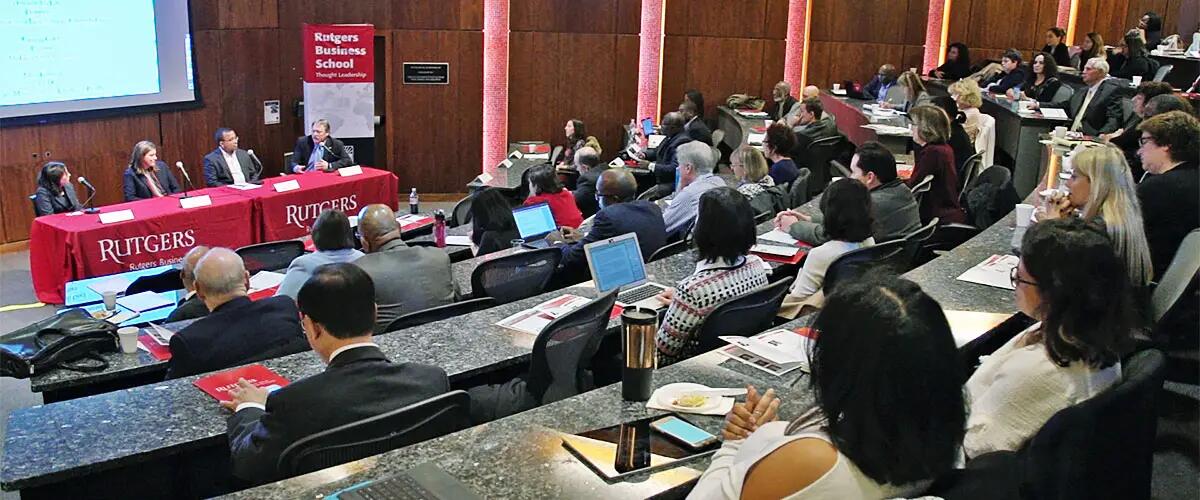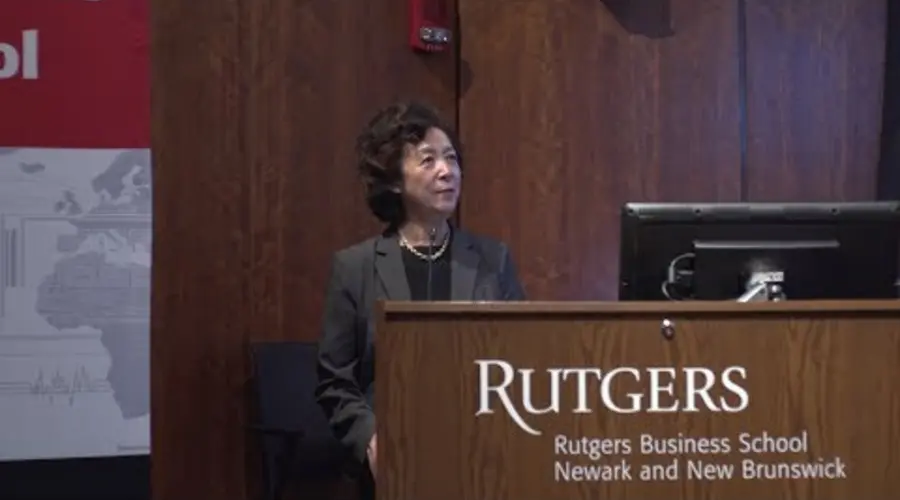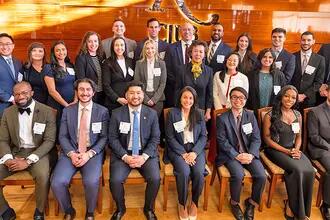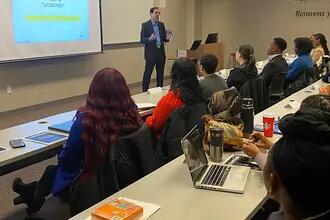
Symposium confronts how to prepare the next generation for the “new economy”
The fast pace of innovation in the economy has prompted serious reflection on the role higher education should be playing to prepare students for the workforce of tomorrow.
Business leaders, educators and public officials discussed the problems facing businesses today to find skilled workers and ways to address these challenges at Rutgers Business School’s Business Community Engagement Symposium in November.
Hosted by Lei Lei, Dean of Rutgers Business School, the symposium’s objective aimed to promote collaboration between Rutgers Business School, the business community, public schools, city government and non-profit agencies. “The time is now for public, private and community leaders to be revolutionary together,” she said.
Symposium tackles how to prepare the next generation for the “new economy."
In a panel discussion led by Wall Street Journal reporter Lauren Weber, Umesh Goel, a partner at McKinsey, a global consulting firm, said that 30-40% of all jobs in the U.S. could be automated in the next five years. [See McKinsey report on automation.]
“Even though people are worried that automation is going to wipe out jobs, actually the demand is higher for more skilled workers,” he said. “The jobs are there, the problem is people have to learn new things, quickly. Those who do will benefit greatly from the new economy.”
Manufacturers agreed according John Kennedy, CEO of the New Jersey Manufacturing Extension Program, who pointed out that automation has been happening for decades. “Manufacturing is not dead,” he said citing the 2,950 new manufacturing jobs created in New Jersey over the last year. “Society has to make ‘getting your hands dirty’ mean something and not be demeaning.”
Employers are defaulting to a bachelor’s degree as the minimum credential needed to hire someone. But credentials are not matching company’s needs according to Heather McKay, director of Rutgers Education and Employment Research Center. “There needs to be a way to stack relevant credentials other than solely through traditional four-year degrees,” said McKay.
“Even though people are worried that automation is going to wipe out jobs, actually the demand is higher for more skilled workers" - Umesh Goel
RU-N Example
One way that higher education institutions could help shape the future workforce was to be more embedded in the community, an approach taken by Rutgers University – Newark (RU-N). “We have to create pathways all the way from K to 12 to community colleges to 4-year universities,” said Nancy Cantor, Chancellor of Rutgers University – Newark.
With only 18 percent of Newark residents going on to college, Cantor is determined to provide the opportunity for the underutilized population in Newark to become part of the talent pool by offering any Newark resident whose family income is $60,000 a year or less, free tuition with admission to the school [learn more about the financial aid initiative to tap Newark’s talent].
The state of New Jersey and no-profit organizations have been actively bringing together education institutions with people who need training and businesses that need workers. Aaron Fichtner, commissioner of the New Jersey Department of Labor and Workforce Development, said his agency had created talent centers across the state to provide career pathways for New Jersey residents. And Michele Siekerka, President & CEO of the New Jersey Business and Industry Association (NJBIA), was actively helping businesses get a seat at the table to help write college curriculum.
Rutgers Business School started the Public Private Community Partnership Program led by professor Kevin Lyons to engage the business school with local and state-wide communities to promote collaboration.
- Daniel J. Stoll
Press: For all media inquiries see our Media Kit



